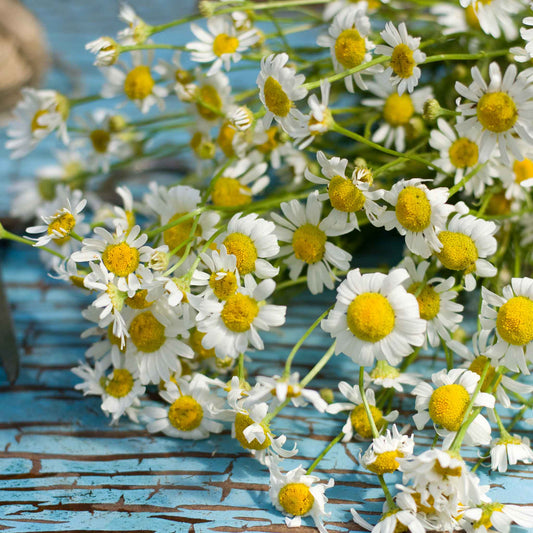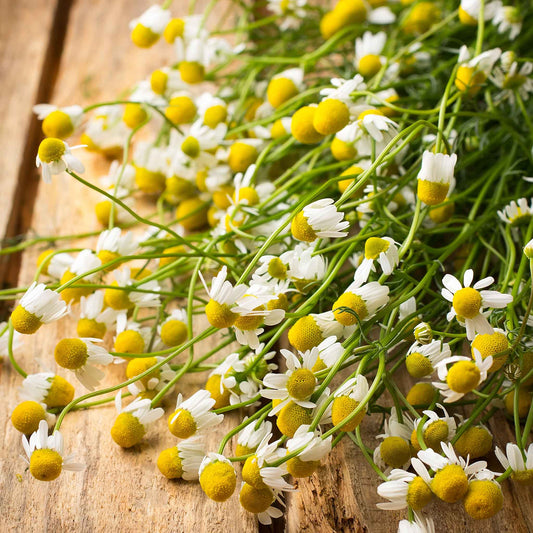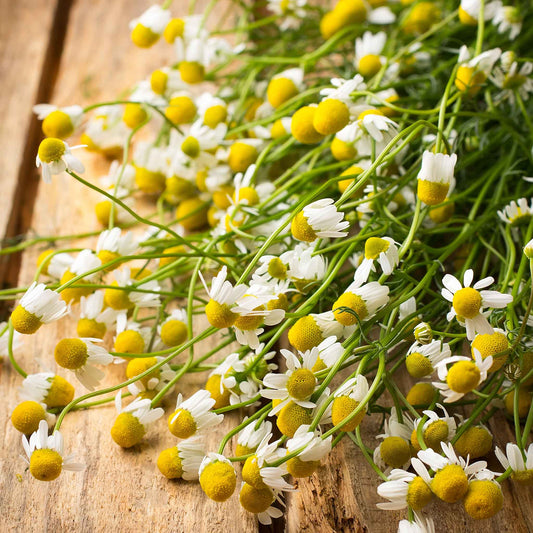-
main-collection-product-grid

Chamomile Seeds - Roman
Characteristically fruity and less bitter than the German varietyChamomile Seeds - Roman
Characteristically fruity and less bitter than the German varietyRegular price As Low As $6.99Regular priceUnit price per -
main-collection-product-grid

Chamomile Seeds - German
Prolific, dainty flowers provide a sweet, fruity flavor for teasChamomile Seeds - German
Prolific, dainty flowers provide a sweet, fruity flavor for teasRegular price As Low As $4.99Regular priceUnit price per -
main-collection-product-grid

Chamomile Seeds (Organic) - German
Often used in teas with a fruity, sweet flavorChamomile Seeds (Organic) - German
Often used in teas with a fruity, sweet flavorRegular price As Low As $7.99Regular priceUnit price per -
main-collection-product-grid

Culinary Herb Holiday Gift Collection
The perfect holiday gift for gardeners. home chefs and anyone who loves fresh ingredientsCulinary Herb Holiday Gift Collection
The perfect holiday gift for gardeners. home chefs and anyone who loves fresh ingredientsRegular price $44.99Regular priceUnit price per
Growing chamomile in your garden
- German or roman varieties available
- Tall-growing heirloom annual
- Popular uses include culinary, fragrance, and medicinal
- Thrives in bright, sunny growing areas
The amazing characteristics of chamomile
We are all familiar with the calming and sedative properties of chamomile tea, which can be brewed from either German chamomile or Roman chamomile flowers. Chamomile offers medicinal properties, helping with numerous conventional health issues due to its anti-inflammatory, antioxidant, and mild astringent properties. It can be used in the form of tea, tincture, lotion, capsules, or drops.
This daisy-like plant comes from the Asteraceae family, which also includes sunflowers, Echinacea, and marigold. Chamomile comes from the Greek word chamomaela, meaning ground apple to describe its refreshing scent. Chamomile has been around for a very long time, dating back thousands of years to at least as early as ancient Egyptian times. The widely renowned herb offers a multitude of beneficial properties and uses. Why not grow chamomile in your very own herb garden this year?
When and how to grow chamomile from seed
Direct sow chamomile seeds in late fall, after the first killing frost, so seeds naturally cold stratify. For spring planting, start seeds indoors about six weeks before the final frost date. The optimal temperature for chamomile to germinate is 65°F. Chamomile thrives in full sun conditions, but can also tolerate partial shade. Use rich, organic soil that is well-drained.
Sow your seeds directly onto the surface of the soil. Do not cover seeds, as they require direct sunlight to germinate. Once seedlings are about one inch tall, thin out to one plant every two to four inches. If growing indoors, be sure to transplant before chamomile's first blooms. Harvest the chamomile flower once it is fully open. The flower can be used fresh or choose a dried flower use for your chamomile plants. Leaves may be harvested in late spring through early summer.
What to grow with chamomile plants
Besides its aesthetic and medicinal qualities, chamomile can also be very useful in the garden by facilitating growth and even healing nearby plants. Companion plants for chamomile include bee balm, phlox, Black Eyed Susan, lungwort, astilbe, bleeding heart, and delphiniums.
For more information about planting, growing, and caring for chamomile seed, see the Chamomile Seeds Planting Guide.



